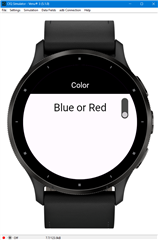Hello,
I am trying to figure out how to do on watch Menus. It’s gotten the better of me for a while now. So…I tried to extract how to do a menu based on ComplexFW (thanks again JM). The only thing I want it to do is display a time and use an on-watch menu to determine if it displays 24 hour or 12 hour time.
The watch face runs until I select “trigger app settings” in the simulator. Then, nothing happens until about 5 seconds later when the whole thing crashes. There are no errors listed in the Problems, Debug console, or Terminal. It just shows the garmin triangle and stops running.
I’ve posted the entire (short?) program here: https://github.com/FlyFrosty/MyMenu
Any help would be appreciated
Jeff




 Red
Red Red
Red
